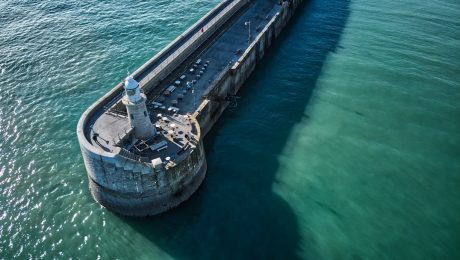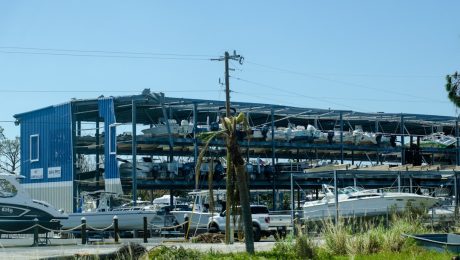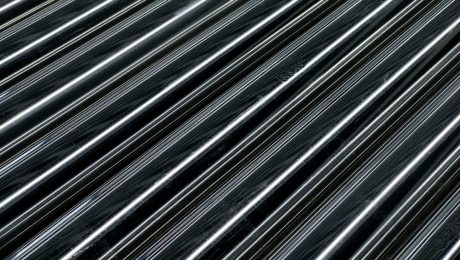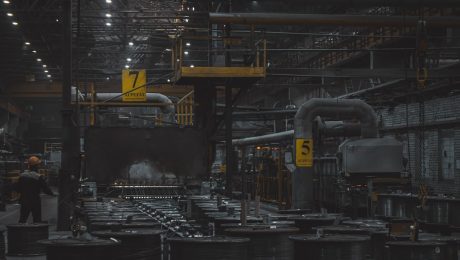Cold drawn hexagonal bars are a crucial component in numerous industries, offering a unique blend of strength, precision, and versatility. This comprehensive guide delves into the intricacies of these specialized steel bars, exploring their manufacturing process, properties, applications, and selection criteria. Whether you’re an engineer, manufacturer, or simply curious about the world of materials science, this post will provide valuable insights.
The Manufacturing Process: From Coil to Precision
The journey of a cold drawn hexagonal bar begins with a hot-rolled steel coil. This coil undergoes a series of crucial steps to achieve its final form and properties. First, the coil is straightened and cut into bars of the desired length. These bars are then subjected to a crucial process: cold drawing. Cold drawing involves pulling the steel bar through a series of progressively smaller dies. This process significantly alters the bar’s microstructure, resulting in increased strength, improved surface finish, and tighter tolerances. The hexagonal shape is achieved through precisely engineered dies designed to create the six-sided profile. The entire process is highly controlled, ensuring consistency and accuracy in the final product. Throughout the process, rigorous quality checks are performed to guarantee that the bars meet the specified dimensions and mechanical properties.
Exceptional Mechanical Properties: Strength and Durability
Cold drawing significantly enhances the mechanical properties of the steel. Compared to hot-rolled counterparts, cold drawn hexagonal bars exhibit higher tensile strength, yield strength, and fatigue resistance. This increased strength is a direct result of the cold working process, which introduces significant strain hardening. The improved surface finish also contributes to enhanced fatigue life, as surface imperfections can act as stress concentrators, initiating fatigue cracks. The precise dimensions and tolerances achieved through cold drawing further contribute to the overall reliability and performance of these bars. These enhanced properties make cold drawn hexagonal bars ideal for applications requiring high strength and durability under demanding conditions.
Diverse Applications: Where Precision Meets Performance
The unique combination of strength, precision, and surface finish makes cold drawn hexagonal bars highly versatile. They find applications in a wide range of industries, including: Automotive: used in various components requiring high strength and fatigue resistance, such as axles, connecting rods, and steering components. Construction: employed in structural applications where high tensile strength is crucial. Machinery Manufacturing: utilized in the creation of precision components for machinery, tools, and equipment. Aerospace: selected for applications demanding high strength-to-weight ratios and exceptional fatigue resistance. Oil and Gas: used in components requiring high strength and corrosion resistance in demanding environments. The specific grade of steel used will determine its suitability for a particular application, with different grades offering varying levels of strength, hardness, and corrosion resistance.
Selecting the Right Bar: Grade, Size, and Tolerance
Choosing the appropriate cold drawn hexagonal bar requires careful consideration of several factors. The grade of steel is paramount, determining its strength, ductility, and corrosion resistance. Common grades include low carbon steel, medium carbon steel, and alloy steels, each offering unique properties. The size of the bar is another critical factor, dictated by the application’s requirements. Cold drawn hexagonal bars are available in a wide range of sizes, from small diameters to larger sections. Finally, the tolerance level must be carefully chosen to ensure the bar meets the precise dimensional requirements of the application. Tight tolerances are often required for applications requiring high precision and accuracy.
Advantages of Cold Drawn Hexagonal Bars Over Alternatives
Cold drawn hexagonal bars offer several advantages over alternative materials and manufacturing processes. Their superior strength and durability compared to hot-rolled bars make them ideal for high-stress applications. The excellent surface finish reduces the need for further machining, saving time and cost. The precise dimensions and tolerances eliminate the need for extensive finishing operations, streamlining manufacturing processes. The consistent quality and reliability of cold drawn bars contribute to the overall efficiency and performance of the final product. In comparison to other shapes, the hexagonal profile offers a good balance between strength and ease of handling, making it a versatile choice for many applications.
In conclusion, cold drawn hexagonal bars represent a sophisticated material solution for a wide variety of engineering applications. Their combination of high strength, precise dimensions, and excellent surface finish makes them a valuable asset in industries demanding high performance and reliability. Understanding the nuances of their manufacturing process, properties, and application selection is key to leveraging their full potential.
Tags: cold drawn hexagonal bars, hexagonal steel bars, cold drawn steel, precision bars, engineering materials
body { font-family: sans-serif; line-height: 1.6; }
h1, h2, h3 { color: #333; }
img { max-width: 100%; height: auto; }
Steel, a cornerstone of modern construction and infrastructure, faces a formidable adversary in saltwater environments. The relentless assault of seawater, with its dissolved salts, oxygen, and microorganisms, can lead to rapid and devastating corrosion, compromising structural integrity and necessitating costly repairs or replacements. Understanding the mechanisms of saltwater corrosion and employing appropriate protective measures is crucial for ensuring the long-term durability of steel structures in coastal and marine applications.
The Mechanisms of Saltwater Corrosion on Steel
Saltwater corrosion is a complex electrochemical process. When steel is exposed to saltwater, an electrochemical cell is formed. The steel acts as an anode, losing electrons and undergoing oxidation (rusting), while oxygen dissolved in the water acts as a cathode, gaining electrons and undergoing reduction. This process is accelerated by the presence of chloride ions (Cl-), which are abundant in saltwater. Chloride ions penetrate the protective passive oxide layer that normally forms on steel, disrupting its protective function and accelerating the corrosion rate. The formation of pits, localized areas of intense corrosion, is a characteristic feature of saltwater corrosion, often leading to premature failure.
The Role of Alloying Elements in Enhancing Steel Durability
The susceptibility of steel to saltwater corrosion can be significantly reduced by alloying it with specific elements. Stainless steels, for example, contain significant amounts of chromium (typically 10.5% or more), which forms a passive chromium oxide layer that is highly resistant to corrosion. This layer self-heals when damaged, providing long-term protection. Other alloying elements, such as nickel, molybdenum, and nitrogen, further enhance corrosion resistance in various saltwater environments. The specific alloy composition is chosen based on the severity of the expected exposure and the required lifespan of the steel structure.
Protective Coatings: A Critical Defense Against Saltwater Corrosion
Protective coatings act as a barrier between the steel and the corrosive saltwater environment. Various coating systems are employed, including paints, zinc coatings (galvanization), and more sophisticated systems like epoxy coatings and specialized marine-grade paints. The choice of coating depends on several factors, including the severity of the saltwater exposure, the required lifespan, and cost considerations. Proper surface preparation before coating application is crucial for achieving optimal adhesion and long-term performance. Regular inspection and maintenance of coatings are also essential to ensure continued protection.
Cathodic Protection: An Electrochemical Shield for Steel Structures
Cathodic protection is an electrochemical technique used to mitigate corrosion by making the steel structure the cathode in an electrochemical cell. This is achieved by connecting the steel to a more anodic material (e.g., zinc or magnesium), which corrodes preferentially, protecting the steel structure. Alternatively, an impressed current cathodic protection system can be used, where a direct current is applied to the steel structure, forcing it to become the cathode. Cathodic protection is particularly effective in highly corrosive saltwater environments and is widely used for protecting pipelines, ships, and other submerged structures.
Selecting the Right Steel for Saltwater Applications: A Case-by-Case Approach
Choosing the appropriate steel for a specific saltwater application requires careful consideration of several factors, including the severity of the exposure (e.g., immersion, splash zone, atmospheric exposure), the required lifespan of the structure, and the budget constraints. Factors such as water temperature, salinity, and the presence of other corrosive agents (e.g., sulfides) also influence the choice of steel. Consulting with materials engineers and conducting corrosion testing are crucial steps in ensuring that the selected steel is suitable for the intended application.
In conclusion, ensuring the durability of steel in saltwater environments necessitates a multi-faceted approach. Understanding the mechanisms of corrosion, selecting appropriate alloys, employing effective protective coatings, and considering cathodic protection are all crucial aspects of designing and maintaining long-lasting steel structures in coastal and marine settings. A holistic and well-informed approach is paramount to mitigating corrosion and ensuring structural integrity in these challenging environments.
Tags: saltwater corrosion, steel durability, marine steel, corrosion protection, stainless steel
The marine environment presents unique challenges to pipe systems. From the corrosive effects of saltwater to the constant motion of the vessel, ensuring the integrity and safety of pipes onboard ships and offshore platforms is paramount. A failure in a marine piping system can lead to catastrophic consequences, including environmental damage, loss of life, and significant financial losses. This comprehensive guide delves into the critical aspects of maintaining pipe safety in marine applications.
1. Material Selection: The Foundation of Marine Pipe Safety
Choosing the right pipe material is the cornerstone of a safe and reliable marine piping system. The selection process must consider several factors, including the fluid being transported, the operating pressure and temperature, the corrosive environment, and the structural integrity requirements. Common materials used in marine applications include:
- Stainless Steel: Offers excellent corrosion resistance, making it ideal for saltwater applications. Different grades (e.g., 316L) offer varying levels of corrosion resistance and strength.
- Duplex Stainless Steel: Provides superior strength and corrosion resistance compared to standard stainless steel, suitable for high-pressure and demanding applications.
- Carbon Steel: A cost-effective option, often used with protective coatings (e.g., zinc galvanizing, epoxy) to mitigate corrosion in less aggressive environments.
- Copper Nickel Alloys: Excellent resistance to corrosion and biofouling, often used in seawater cooling systems.
- Plastics (e.g., PVC, CPVC): Used for low-pressure applications where corrosion resistance is crucial and weight is a concern.
Careful consideration of material compatibility is crucial to prevent galvanic corrosion, which occurs when dissimilar metals are in contact in an electrolyte (like seawater). Proper material selection, informed by detailed risk assessments and engineering calculations, is crucial for long-term safety and reliability.
2. Corrosion Prevention: A Continuous Battle Against Degradation
Marine environments are inherently corrosive. Saltwater, humidity, and exposure to the elements accelerate the degradation of pipe materials. Implementing robust corrosion prevention strategies is essential for maintaining pipe integrity. These strategies include:
- Protective Coatings: Applying coatings like zinc, epoxy, or polyurethane to the pipe’s surface creates a barrier against corrosion.
- Cathodic Protection: This electrochemical method uses sacrificial anodes or impressed current to protect the pipe from corrosion by making it the cathode in an electrochemical cell.
- Regular Inspections and Maintenance: Visual inspections, along with non-destructive testing (NDT) methods like ultrasonic testing (UT) and magnetic particle inspection (MPI), help detect corrosion early and prevent catastrophic failures.
- Proper Drainage and Ventilation: Ensuring proper drainage prevents water accumulation, while adequate ventilation reduces condensation and humidity.
A proactive approach to corrosion prevention is vital. Regular maintenance and prompt attention to any signs of corrosion significantly reduce the risk of pipe failure.
3. Pressure Testing and Leak Detection: Ensuring System Integrity
Before commissioning a marine piping system, rigorous pressure testing is essential to verify its integrity and identify any leaks. The test pressure should exceed the maximum operating pressure to ensure the system can withstand expected stresses. Leak detection methods include:
- Hydrostatic Testing: Using water under pressure to test the system’s ability to withstand pressure.
- Pneumatic Testing: Using compressed air, but requires careful control to avoid over-pressurization and potential hazards.
- Leak Detection Equipment: Utilizing specialized equipment like acoustic leak detectors or pressure sensors to identify small leaks that might be missed during visual inspection.
Regular pressure testing and leak detection during operation are also crucial for early detection of potential problems before they escalate into major failures.
4. Proper Installation and Support: Minimizing Stress and Strain
Improper installation can significantly reduce the lifespan and safety of a marine piping system. Pipes must be properly supported to minimize stress and strain caused by vessel movement, thermal expansion, and vibration. Key aspects of proper installation include:
- Correct Pipe Alignment: Ensuring pipes are properly aligned to prevent stress concentrations and leaks at joints.
- Adequate Support Systems: Utilizing appropriate hangers, clamps, and supports to prevent sagging and vibration.
- Proper Joint Fabrication: Employing qualified welders and appropriate welding techniques to ensure strong and leak-free joints.
- Stress Relief: Implementing stress relief measures, such as annealing, to reduce residual stresses in the pipe and welds.
Careful planning and execution during installation are crucial for ensuring a long-lasting and safe piping system.
5. Regular Inspection and Maintenance: Proactive Safety Measures
Regular inspection and maintenance are vital for preventing accidents and ensuring the continued safe operation of marine piping systems. A comprehensive maintenance program should include:
- Visual Inspections: Regular visual checks for corrosion, leaks, damage, and signs of wear and tear.
- Non-Destructive Testing (NDT): Periodic NDT inspections using methods like UT, MPI, or radiographic testing to detect internal flaws and corrosion.
- Pressure Testing: Regular pressure testing to verify system integrity and identify leaks.
- Preventative Maintenance: Scheduled maintenance tasks such as cleaning, lubrication, and replacement of worn components.
- Documentation: Maintaining detailed records of inspections, maintenance activities, and any repairs carried out.
A well-defined inspection and maintenance schedule, tailored to the specific piping system and its operating conditions, is critical for ensuring long-term safety and reliability.
By adhering to these guidelines and prioritizing safety, the maritime industry can significantly reduce the risk of pipe failures and ensure the safe and efficient operation of vessels and offshore platforms.
SEO Tags:
marine piping safety, offshore piping safety, marine pipeline inspection, corrosion prevention marine, shipbuilding safety
The steel industry is a cornerstone of modern construction and infrastructure. While mass production plays a significant role, the demand for customized steel solutions is booming. This is where project-based steel manufacturing shines, offering tailored solutions for unique architectural designs, complex engineering projects, and specialized industrial needs. This comprehensive guide dives into the intricacies of this specialized manufacturing approach.
1. From Blueprint to Steel: The Design and Engineering Phase
Project-based steel manufacturing begins long before the first spark flies. The design and engineering phase is crucial, requiring close collaboration between the steel manufacturer, architects, engineers, and the client. This involves detailed analysis of structural requirements, material specifications, and manufacturing limitations. Advanced software like CAD (Computer-Aided Design) and BIM (Building Information Modeling) are extensively used to create precise 3D models, ensuring accuracy and minimizing errors during fabrication. This stage also includes meticulous calculations to determine the optimal steel grades, thicknesses, and connections needed to meet the project’s specific load-bearing capacity and aesthetic requirements. Careful consideration is given to factors like corrosion resistance, fire safety, and environmental impact, leading to the development of detailed fabrication drawings and specifications that serve as the roadmap for the entire manufacturing process.
2. Precision Fabrication: Shaping Steel to Perfection
Once the design is finalized, the fabrication process commences. This phase involves cutting, shaping, welding, and assembling steel components according to the precise specifications outlined in the drawings. Project-based steel manufacturing often utilizes advanced technologies like CNC (Computer Numerical Control) machines for high-precision cutting and shaping. These machines ensure consistency and accuracy, minimizing waste and reducing the risk of errors. Welding is a critical aspect, requiring skilled welders adhering to strict quality control standards. Different welding techniques, such as MIG (Metal Inert Gas) and TIG (Tungsten Inert Gas), are employed based on the project’s requirements. The fabrication process might also involve specialized techniques like shot blasting for surface preparation, painting or galvanizing for corrosion protection, and the incorporation of other materials like concrete or wood for hybrid structures.
3. Quality Control: Ensuring Structural Integrity
Quality control is paramount in project-based steel manufacturing. Rigorous testing and inspection procedures are implemented at every stage, from the incoming raw materials to the final assembled product. Non-destructive testing (NDT) methods, such as ultrasonic testing and radiographic testing, are employed to detect internal flaws or defects without damaging the steel components. Dimensional checks ensure that all fabricated parts conform to the design specifications. Welding inspections verify the quality of welds, ensuring their strength and integrity. Documentation of all quality control procedures is meticulously maintained, providing a comprehensive audit trail and ensuring compliance with relevant industry standards and building codes. This rigorous approach safeguards the structural integrity of the final product and minimizes the risk of failures.
4. Project Management: Orchestrating a Seamless Process
Effective project management is crucial for success in project-based steel manufacturing. This involves careful planning, scheduling, and coordination of all activities, from design and fabrication to delivery and installation. Project managers utilize various tools and techniques to track progress, manage resources, and ensure timely completion. Communication is key, requiring seamless collaboration between the manufacturer, subcontractors, and the client. Risk management is also vital, anticipating potential challenges and developing contingency plans to mitigate delays or cost overruns. Efficient logistics are essential, ensuring the timely delivery of materials and finished products to the construction site. Project management software helps in streamlining the workflow and provides valuable insights into project performance, enabling proactive adjustments and ensuring the project is completed on time and within budget.
5. The Future of Project-Based Steel Manufacturing: Innovation and Sustainability
The future of project-based steel manufacturing is marked by innovation and a growing emphasis on sustainability. Advanced technologies like 3D printing and robotic automation are transforming fabrication processes, enabling greater precision, efficiency, and customization. The use of sustainable steel production methods, including the increased use of recycled steel and the development of lower-carbon steel alloys, is gaining momentum. Digitalization is playing a significant role, with the adoption of advanced software and data analytics to optimize processes, enhance collaboration, and improve overall efficiency. Furthermore, the industry is focusing on developing innovative designs that minimize material waste and maximize structural performance, contributing to a more environmentally friendly approach to steel manufacturing.
Project-based steel manufacturing is a complex but rewarding undertaking. By mastering the intricate details of design, fabrication, quality control, and project management, steel manufacturers can deliver customized solutions that meet the unique requirements of diverse projects, shaping the built environment and driving innovation within the industry.
body {
font-family: sans-serif;
line-height: 1.6;
}
h1, h2, h3 {
color: #333;
}
h1 {
font-size: 2.5em;
}
h2 {
font-size: 2em;
}
h3 {
font-size: 1.5em;
}
In today’s fast-paced steel industry, efficiency and accurate information are paramount. GlobalSteel’s suite of web tools provides a powerful solution for streamlining your steel procurement, management, and overall supply chain. This comprehensive guide will delve into the key features and benefits of leveraging these tools to optimize your operations and gain a competitive edge.
Streamlining Steel Procurement with GlobalSteel’s Online Platform
The core of GlobalSteel’s offering is its intuitive online platform. This centralized hub allows you to access real-time steel pricing, compare quotes from multiple suppliers, and manage your orders efficiently. No more endless phone calls and emails – the platform provides a transparent and easily navigable system. Key features include:
- Real-time Price Updates: Stay informed about market fluctuations and make informed purchasing decisions based on the latest pricing data.
- Supplier Comparison: Quickly compare quotes from various suppliers based on price, delivery time, and other crucial factors.
- Order Tracking: Monitor the status of your orders from placement to delivery, ensuring timely receipt of materials.
- Secure Communication: Communicate directly with suppliers through the platform, maintaining a clear audit trail of all interactions.
Optimizing Inventory Management with GlobalSteel’s Inventory Tracking Tools
Efficient inventory management is critical for minimizing storage costs and preventing stockouts. GlobalSteel’s inventory tracking tools offer a robust solution for managing your steel inventory effectively. These tools integrate seamlessly with the procurement platform, providing a holistic view of your steel assets. Features include:
- Real-time Inventory Visibility: Gain a clear understanding of your current stock levels, allowing for proactive reordering and minimizing disruptions.
- Automated Stock Alerts: Receive automatic notifications when stock levels reach pre-defined thresholds, preventing stockouts and ensuring continuous production.
- Detailed Reporting: Generate comprehensive reports on inventory turnover, consumption rates, and other key metrics to optimize your inventory strategy.
- Lot Tracking: Track individual steel lots, ensuring traceability and facilitating quality control.
Leveraging GlobalSteel’s Data Analytics for Informed Decision-Making
GlobalSteel’s platform goes beyond basic procurement and inventory management. It provides powerful data analytics capabilities to help you make informed decisions based on concrete data. By analyzing historical purchasing patterns, consumption rates, and market trends, you can optimize your steel sourcing strategy and reduce costs. Key analytical features include:
- Customizable Reporting: Generate tailored reports to track key performance indicators (KPIs) relevant to your specific business needs.
- Trend Analysis: Identify emerging market trends and adjust your procurement strategy accordingly to mitigate risks and capitalize on opportunities.
- Cost Optimization Analysis: Analyze your purchasing history to identify areas for cost reduction and negotiate better terms with suppliers.
- Predictive Analytics: Utilize advanced analytics to forecast future steel demand and optimize your inventory levels proactively.
Improving Supply Chain Visibility and Collaboration with GlobalSteel
Effective supply chain management requires seamless collaboration between all stakeholders. GlobalSteel’s platform facilitates this collaboration by providing a centralized communication and information-sharing hub. This improved visibility enhances efficiency and reduces the risk of disruptions. Key features include:
- Centralized Communication: Communicate directly with suppliers, logistics providers, and internal teams through a single platform.
- Real-time Shipment Tracking: Monitor the movement of your steel shipments in real-time, ensuring timely delivery and minimizing delays.
- Improved Collaboration: Streamline communication and collaboration among all parties involved in the supply chain, enhancing efficiency and responsiveness.
- Reduced Lead Times: Optimize the entire supply chain process, leading to reduced lead times and improved operational efficiency.
Enhancing Security and Compliance with GlobalSteel’s Secure Platform
Data security and compliance are paramount in today’s business environment. GlobalSteel’s platform employs robust security measures to protect your sensitive data and ensure compliance with industry regulations. These measures include:
- Secure Data Encryption: All data transmitted and stored on the platform is encrypted to protect it from unauthorized access.
- Role-Based Access Control: Control access to sensitive information based on user roles and permissions, ensuring data confidentiality.
- Regular Security Audits: GlobalSteel conducts regular security audits to identify and address potential vulnerabilities.
- Compliance with Industry Standards: The platform is designed to comply with relevant industry standards and regulations, ensuring data integrity and security.
By leveraging the comprehensive suite of tools offered by GlobalSteel, businesses in the steel industry can significantly improve efficiency, reduce costs, and gain a competitive advantage. The platform’s focus on transparency, collaboration, and data-driven decision-making makes it an invaluable asset for any organization looking to optimize its steel management processes.
SEO-Friendly Tags:
- GlobalSteel
- Steel Procurement Software
- Steel Inventory Management
- Steel Supply Chain Management
- Steel Industry Technology
body { font-family: sans-serif; line-height: 1.6; }
h1, h2, h3 { color: #333; }
h1 { font-size: 2.5em; }
h2 { font-size: 2em; }
h3 { font-size: 1.5em; }
The global steel industry thrives on international trade. For buyers and sellers involved in steel exports, understanding Incoterms – specifically FOB (Free On Board) and CIF (Cost, Insurance, and Freight) – is paramount. These terms define responsibilities and costs associated with the shipment, impacting pricing, risk management, and overall transaction success. This comprehensive guide will dissect the differences between FOB and CIF in steel exports, enabling you to make informed decisions.
Understanding Incoterms: The Foundation of International Trade
Incoterms, or International Commercial Terms, are standardized trade terms published by the International Chamber of Commerce (ICC). They clarify responsibilities for delivery, insurance, and costs between the buyer and seller. Choosing the right Incoterm is crucial because it dictates when the risk of loss or damage to the goods transfers from the seller to the buyer, and who bears the cost of various aspects of the shipment. While many Incoterms exist, FOB and CIF are frequently used in steel exports, each with its own distinct implications.
FOB (Free On Board): Seller’s Responsibilities at the Port of Loading
With FOB, the seller’s responsibility ends when the goods are loaded onto the vessel at the named port of shipment. This means the seller is responsible for:
- Delivering the goods to the named port of shipment.
- Loading the goods onto the vessel.
- Providing the necessary export documentation.
However, the seller is not responsible for:
- The cost of freight (ocean transport).
- The cost of marine insurance.
- Risks associated with the goods after they are loaded onto the vessel.
In the context of steel exports, this means the buyer arranges and pays for the shipping and insurance, bearing the risk of loss or damage during transit. The seller needs to ensure the steel is properly packaged and loaded to withstand the journey, but their responsibility ends at the port’s edge.
CIF (Cost, Insurance, and Freight): Seller’s Broader Responsibilities
CIF shifts more responsibility to the seller. Under CIF, the seller is responsible for:
- Delivering the goods to the named port of shipment.
- Loading the goods onto the vessel.
- Paying for the freight (ocean transport).
- Procuring and paying for marine insurance to cover the goods during transit.
- Providing the necessary export documentation.
The seller’s responsibility ends when the goods are shipped and the insurance policy is handed over to the buyer. The risk of loss or damage during transit remains with the seller until the goods are delivered to the port of destination. This is a significant difference from FOB.
For steel exporters, CIF means a higher initial cost, as the seller covers freight and insurance. However, it simplifies the process for the buyer, who only needs to arrange customs clearance at the destination port.
Choosing Between FOB and CIF: Factors to Consider
The choice between FOB and CIF depends on various factors, including:
- Buyer’s experience in international shipping: Buyers with less experience in international shipping might prefer CIF for simplicity. Experienced buyers might opt for FOB to have more control over shipping arrangements and potentially secure better freight rates.
- Market conditions: Freight rates and insurance costs fluctuate. Analyzing these factors helps determine which Incoterm is more cost-effective at a particular time.
- Risk tolerance: FOB places more risk on the buyer, while CIF shifts the risk to the seller. The parties’ risk tolerance should be considered.
- Negotiating power: The negotiating power of both parties will influence the final decision. A stronger buyer might negotiate FOB to reduce costs, while a stronger seller might prefer CIF to secure a higher price.
- Type of steel and packaging: The nature of the steel and its packaging might influence the choice. For delicate or high-value steel, CIF with comprehensive insurance might be preferred.
Legal and Contractual Implications: Protecting Your Interests
Regardless of whether FOB or CIF is chosen, it’s crucial to have a well-drafted contract that clearly outlines all responsibilities, costs, and risk transfers. This contract should explicitly mention the chosen Incoterm and any deviations from the standard Incoterm definition. Ambiguity can lead to disputes and costly legal battles. Consulting with legal professionals specializing in international trade is highly recommended to ensure your interests are protected.
Proper documentation is also essential. This includes the sales contract, bill of lading, commercial invoice, certificate of origin, and insurance policy (for CIF). These documents provide evidence of the transaction and are crucial for customs clearance and potential claims in case of disputes.
By understanding the nuances of FOB and CIF, steel exporters and importers can navigate the complexities of international trade more effectively, minimizing risks and maximizing profitability. Careful consideration of all factors and a well-defined contract are crucial for a smooth and successful transaction.
SEO-Friendly Tags:
- FOB Steel Export
- CIF Steel Export
- Incoterms Steel Trade
- International Steel Shipping
- Steel Export Incoterms Explained
The steel industry is a complex network of procurement, production, and distribution. Navigating this landscape efficiently requires robust tools and streamlined processes. GlobalSteel’s suite of web-based tools offers a powerful solution, providing a centralized platform for managing every aspect of your steel operations. This comprehensive guide will delve into the key features and functionalities of GlobalSteel’s web tools, empowering you to optimize your business and gain a competitive edge.
1. Streamlining Steel Procurement with GlobalSteel’s Sourcing Platform
GlobalSteel’s sourcing platform revolutionizes the way you procure steel. Gone are the days of endless phone calls, emails, and spreadsheets. This integrated platform allows you to connect with a vast network of verified steel suppliers globally. You can easily search for specific steel grades, dimensions, and quantities, compare prices from multiple vendors, and initiate orders directly through the platform. The detailed supplier profiles provide transparency and ensure you’re working with reliable partners. Key features include:
- Advanced Search Filters: Quickly find the exact steel you need using detailed filters for grade, size, quantity, and location.
- Real-time Price Updates: Stay informed about market fluctuations and secure the best possible pricing.
- Secure Ordering System: Place orders with confidence, knowing your transactions are secure and trackable.
- Supplier Communication Tools: Communicate directly with suppliers within the platform, streamlining the entire process.
2. Efficient Inventory Management: Tracking and Optimizing Your Steel Stock
Effective inventory management is crucial for minimizing storage costs and preventing stockouts. GlobalSteel’s inventory management tools provide real-time visibility into your steel stock levels. The system automatically tracks incoming and outgoing shipments, providing accurate data on what you have, where it is, and when it’s needed. This eliminates guesswork and allows for proactive planning, optimizing your warehouse space and reducing waste. Key benefits include:
- Real-time Inventory Tracking: Monitor stock levels across multiple locations in real-time.
- Automated Stock Alerts: Receive notifications when stock levels reach critical points, preventing shortages.
- Demand Forecasting Tools: Utilize data-driven insights to predict future demand and optimize procurement strategies.
- Lot Tracking and Traceability: Maintain complete traceability of your steel, ensuring quality control and compliance.
3. Leveraging GlobalSteel’s Data Analytics for Informed Decision-Making
GlobalSteel’s platform goes beyond basic functionality by providing powerful data analytics tools. This allows you to gain valuable insights into your procurement patterns, inventory levels, and overall operational efficiency. The system generates detailed reports and visualizations, highlighting key trends and areas for improvement. This data-driven approach enables you to make informed decisions, optimize your processes, and maximize profitability. Key features include:
- Customizable Reports: Generate reports tailored to your specific needs and preferences.
- Interactive Dashboards: Visualize key performance indicators (KPIs) at a glance.
- Trend Analysis: Identify patterns and trends in your data to improve forecasting and planning.
- Comparative Analysis: Compare your performance against industry benchmarks and identify areas for optimization.
4. Enhancing Collaboration and Communication with GlobalSteel’s Integrated Platform
Effective communication is vital in the steel industry. GlobalSteel’s platform fosters seamless collaboration between buyers, suppliers, and internal teams. The integrated communication tools allow for efficient information sharing, reducing delays and misunderstandings. This centralized platform streamlines communication, ensuring everyone is on the same page and improving overall project management. Key features include:
- Secure Messaging System: Communicate directly with suppliers and colleagues within the platform.
- Document Sharing: Easily share documents, specifications, and other relevant information.
- Project Management Tools: Track project progress, manage tasks, and ensure timely completion.
- Centralized Communication Hub: Keep all communication related to a particular project in one place.
5. Staying Ahead with GlobalSteel’s Market Intelligence and Price Tracking
The steel market is dynamic, with prices fluctuating based on various factors. GlobalSteel provides access to real-time market intelligence and price tracking tools, enabling you to stay informed about current market trends and make strategic decisions. This data empowers you to negotiate better prices, anticipate market shifts, and optimize your purchasing strategies. Key benefits include:
- Real-time Price Updates: Access live steel price data to inform your purchasing decisions.
- Market Trend Analysis: Gain insights into market fluctuations and predict future price movements.
- Competitive Benchmarking: Compare prices from different suppliers and identify the best deals.
- Predictive Analytics: Utilize data-driven insights to anticipate future market trends and optimize your strategies.
In conclusion, GlobalSteel’s web tools offer a comprehensive solution for streamlining steel operations. By leveraging these powerful features, you can optimize procurement, manage inventory effectively, gain valuable insights through data analytics, enhance collaboration, and stay ahead of market trends. This ultimately leads to increased efficiency, cost savings, and a stronger competitive position in the dynamic steel industry.
SEO Tags: GlobalSteel, Steel Procurement, Steel Inventory Management, Steel Supply Chain, Steel Pricing
BrightWire is a powerful and versatile open-source machine learning library written in C#. It offers a comprehensive suite of tools for building and deploying various machine learning models, making it a valuable asset for data scientists and developers alike. This blog post will explore the key features that make BrightWire stand out from the crowd.
1. Effortless Data Handling and Preprocessing
One of BrightWire’s strengths lies in its streamlined approach to data handling. It provides efficient mechanisms for loading, cleaning, and transforming data from various sources, including CSV files, databases, and even custom data structures. BrightWire’s built-in data loaders abstract away much of the complexity involved in data ingestion, allowing you to focus on model building. Furthermore, its data preprocessing capabilities include handling missing values (imputation), normalization (scaling), and feature engineering, all critical steps for building robust and accurate models. The library offers a range of built-in transformations, and it also allows for the creation of custom transformations to cater to specific data requirements. This flexibility ensures that BrightWire can adapt to a wide range of datasets and machine learning tasks.
2. A Rich Ecosystem of Neural Network Architectures
BrightWire supports a wide array of neural network architectures, enabling you to build complex and sophisticated models. From simple feedforward networks to more advanced architectures like recurrent neural networks (RNNs), convolutional neural networks (CNNs), and long short-term memory networks (LSTMs), BrightWire provides the building blocks for tackling various machine learning problems. The library’s modular design allows for easy experimentation with different network configurations and hyperparameters. You can easily create custom layers and activation functions, allowing for highly tailored model architectures. This flexibility is essential for achieving optimal performance on specific tasks and datasets.
3. Optimized Training and Backpropagation Algorithms
Efficient training is crucial for building effective machine learning models. BrightWire utilizes optimized backpropagation algorithms and leverages the power of multi-threading to accelerate the training process. It offers various optimizers, including stochastic gradient descent (SGD), Adam, and RMSprop, allowing you to choose the best algorithm for your specific needs. The library also provides tools for monitoring the training progress, such as loss curves and accuracy metrics, enabling you to fine-tune your models and identify potential issues early on. Furthermore, BrightWire’s support for GPU acceleration significantly reduces training times for large datasets and complex models, enabling faster iteration and experimentation.
4. Seamless Model Deployment and Serialization
Once a model is trained, deploying it for real-world applications is paramount. BrightWire simplifies this process by providing mechanisms for serializing and deserializing trained models. This allows you to save your trained models and load them later without retraining, saving significant time and resources. The library also offers tools for integrating trained models into various applications, enabling seamless deployment in different environments. Whether you’re deploying your model to a web application, a desktop application, or a cloud-based service, BrightWire provides the necessary tools to facilitate a smooth and efficient deployment process. The ability to easily save and load models is crucial for reproducibility and for sharing models with others.
5. Extensibility and Community Support
BrightWire’s open-source nature and well-documented API make it highly extensible. The library’s modular design allows developers to easily extend its functionality by creating custom layers, activation functions, and other components. This extensibility is crucial for adapting BrightWire to specialized tasks and integrating it with other libraries and tools. Furthermore, the active community surrounding BrightWire provides valuable support and resources for users. Through forums, online documentation, and collaborative efforts, users can learn from each other, share best practices, and contribute to the ongoing development of the library. This strong community support ensures that BrightWire remains a vibrant and evolving tool for the machine learning community.
In conclusion, BrightWire stands out as a powerful and versatile machine learning library with a comprehensive set of features. From its efficient data handling capabilities to its diverse range of neural network architectures and streamlined deployment tools, BrightWire empowers data scientists and developers to build and deploy sophisticated machine learning models with ease. Its open-source nature and active community further enhance its value, making it a valuable resource for anyone working in the field of machine learning.
SEO-Friendly Tags:
- BrightWire
- Machine Learning Library
- C# Machine Learning
- Neural Network Library
- Deep Learning Framework
body {
font-family: sans-serif;
line-height: 1.6;
}
h1, h2, h3 {
color: #333;
}
img {
max-width: 100%;
height: auto;
}
In the ever-evolving landscape of modern architecture, the choice of structural elements plays a pivotal role in achieving both aesthetic appeal and functional integrity. Among the many options available, IPE beams have emerged as a preferred choice for architects and engineers seeking strength, versatility, and sustainability. This comprehensive guide delves into the world of IPE beams, exploring their unique characteristics and their significant contribution to contemporary building design.
Understanding the Strength and Versatility of IPE Beams
IPE beams, or Parallel Flange Beams, are hot-rolled steel beams characterized by their parallel flanges and constant depth. This design offers several key advantages. Their parallel flanges provide exceptional stability and resistance to bending, making them ideal for supporting heavy loads over significant spans. Unlike other steel sections, the constant depth of IPE beams simplifies design and construction, reducing the need for complex calculations and adjustments. Their high strength-to-weight ratio allows for the creation of slender, elegant structures without compromising structural integrity. This is particularly valuable in modern architectural designs that prioritize open spaces and minimalist aesthetics.
IPE Beams in Modern Architectural Applications
The versatility of IPE beams extends across a wide range of architectural applications. They are frequently used in:
- Residential buildings: Supporting floors, roofs, and balconies in apartments, houses, and townhouses.
- Commercial structures: Forming the skeleton of offices, retail spaces, and shopping malls.
- Industrial buildings: Providing robust support for heavy machinery and equipment in factories and warehouses.
- Public buildings: Contributing to the structural integrity of schools, hospitals, and museums.
- Renovation projects: Strengthening existing structures and extending their lifespan.
Their adaptability allows for creative design solutions, enabling architects to realize ambitious and innovative building concepts.
Design Considerations When Utilizing IPE Beams
While IPE beams offer significant advantages, careful consideration of several design factors is crucial for optimal performance. These include:
- Span length: The distance between supports significantly impacts the beam’s load-bearing capacity. Longer spans require larger sections or additional support.
- Load calculations: Accurate assessment of anticipated loads (dead loads, live loads, snow loads, etc.) is essential to ensure structural safety.
- Corrosion protection: Steel beams are susceptible to corrosion. Applying appropriate coatings or galvanizing is crucial for extending their lifespan, especially in exposed environments.
- Fire protection: In many building codes, fireproofing measures are mandatory to protect steel beams from high temperatures. This often involves applying fire-resistant coatings or encasing the beams in concrete.
- Connections: The design and execution of beam connections are vital for overall structural integrity. Properly designed connections ensure efficient load transfer and prevent premature failure.
Sustainability and the Environmental Impact of IPE Beams
In today’s environmentally conscious world, the sustainability of building materials is a key consideration. IPE beams contribute positively to sustainable construction in several ways. Steel is a highly recyclable material, allowing for significant reductions in waste and embodied carbon. Furthermore, the durability and longevity of IPE beams minimize the need for frequent replacements, reducing the overall environmental impact over the building’s lifespan. The use of IPE beams can also contribute to achieving LEED certification points in green building projects.
Future Trends and Innovations in IPE Beam Applications
The use of IPE beams in modern architecture is constantly evolving. Emerging trends include:
- Increased use in high-rise buildings: Advances in steel technology are enabling the use of IPE beams in increasingly taller structures.
- Integration with other sustainable materials: IPE beams are being increasingly combined with timber, concrete, and other sustainable materials to create hybrid structural systems.
- Advanced design software: Sophisticated software tools are enabling architects and engineers to optimize the use of IPE beams, improving structural efficiency and minimizing material waste.
- Prefabrication: The prefabrication of structural elements using IPE beams is gaining popularity, leading to faster construction times and improved site safety.
- Focus on aesthetics: Architects are increasingly exploring creative ways to expose IPE beams, integrating them as visual elements within the design.
These trends indicate a bright future for IPE beams as a key component in shaping the architecture of tomorrow.
In conclusion, IPE beams offer a compelling combination of strength, versatility, sustainability, and aesthetic appeal, making them a crucial element in modern architectural design. Their adaptability allows architects and engineers to realize innovative and sustainable building solutions, contributing to the creation of functional and visually stunning structures.
SEO Tags:
IPE beams, steel beams, modern architecture, structural engineering, sustainable construction
The humble square. Four sides, four right angles, equal lengths. It seems simple, almost mundane. But beneath its unassuming exterior lies a world of fascinating mathematical properties, artistic expressions, and architectural marvels. This post delves deep into the multifaceted nature of the square, exploring its significance across various disciplines.
The Defining Properties of a Square: A Geometric Deep Dive
A square, in its purest geometric form, is a quadrilateral – a polygon with four sides – possessing unique characteristics. These defining properties are what distinguish it from other quadrilaterals like rectangles, rhombuses, and parallelograms. Firstly, and most importantly, all four sides of a square are of equal length. This property of equidistant sides is crucial. Secondly, all four interior angles of a square are right angles, measuring exactly 90 degrees. This ensures perfect perpendicularity between adjacent sides. The combination of equal sides and right angles leads to several other crucial properties, including the equality of diagonals and their perpendicular bisection.
Furthermore, a square is a special case of several other geometric shapes. It’s a rectangle (a quadrilateral with four right angles) with equal sides, a rhombus (a quadrilateral with four equal sides) with right angles, and a parallelogram (a quadrilateral with opposite sides parallel) with equal sides and right angles. This nested classification highlights the square’s unique position within the broader family of quadrilaterals.
Squares in Art and Design: A Visual Symphony of Symmetry
The square’s inherent symmetry and balanced proportions have captivated artists and designers for centuries. Its regular form lends itself beautifully to creating visually appealing and harmonious compositions. From the precise grids used in Renaissance paintings to the minimalist aesthetics of modern art, the square serves as a foundational element in numerous artistic styles. The use of squares in perspective drawings, for example, helps create a sense of depth and realism. The repetition of square motifs, like in tessellations, creates captivating patterns and textures. Many artists have explored the concept of the square as a symbol of stability, order, and even confinement, depending on the context.
Moreover, the square’s simplicity allows for complex variations. By manipulating size, color, and arrangement, artists can create dynamic and expressive works. Consider the impact of a single, brightly colored square against a neutral background, or the intricate interplay of various sized squares in an abstract composition. The possibilities are endless.
Architectural Applications of the Square: From Ancient Wonders to Modern Skyscrapers
The square’s strength and stability have made it a cornerstone of architecture throughout history. From the perfectly aligned stones of ancient Egyptian pyramids to the intricate geometric patterns of Islamic architecture, the square has played a pivotal role in constructing durable and aesthetically pleasing structures. Its ability to tessellate – to fit together seamlessly without gaps – makes it ideal for creating floor plans, wall designs, and even paving patterns.
In modern architecture, the square continues to be a prevalent form. Many buildings incorporate square or rectangular modules in their design, creating a sense of order and functionality. The use of square windows, square columns, and square building blocks contributes to the overall aesthetic and structural integrity of a building. The square’s versatility allows architects to create both minimalist and ornate designs, demonstrating its enduring relevance in the field.
Calculating the Area and Perimeter of a Square: Practical Applications of Geometry
The mathematical properties of a square make it remarkably easy to calculate its area and perimeter. The perimeter, simply the total length of all four sides, is calculated by multiplying the length of one side by four (P = 4s). The area, representing the space enclosed within the square, is calculated by squaring the length of one side (A = s²). These straightforward formulas are fundamental in various practical applications.
These simple calculations are crucial in numerous fields. From determining the amount of paint needed to cover a square wall to calculating the area of a square plot of land, the ability to quickly and accurately calculate the area and perimeter of a square is essential. These formulas also serve as a foundation for understanding more complex geometric calculations involving other shapes and three-dimensional objects.
Squares Beyond Geometry: Cultural and Symbolic Significance
The square transcends its purely geometric definition, holding significant cultural and symbolic meaning in various societies. In many cultures, the square represents stability, balance, and earthliness. Its four equal sides are often associated with the four cardinal directions, the four elements (earth, air, fire, water), or the four seasons. The square’s structure can symbolize order, rationality, and even the structure of the universe itself.
Furthermore, the square’s association with stability and groundedness makes it a potent symbol in various religious and spiritual contexts. Its presence in architectural designs of sacred spaces reflects its symbolic significance. The square’s multifaceted nature allows for diverse interpretations, making it a rich source of symbolic meaning across cultures and throughout history.
In conclusion, the square, despite its apparent simplicity, is a fascinating subject that offers a wealth of insights into geometry, art, architecture, and cultural symbolism. Its enduring presence across various disciplines highlights its timeless appeal and remarkable versatility.
Tags: square, geometry, area of a square, perimeter of a square, square symbolism










